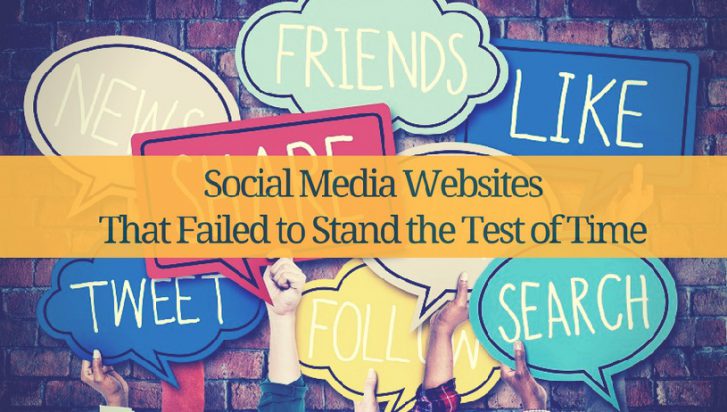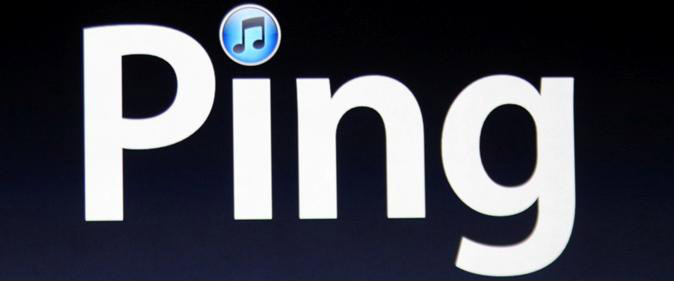
5 Social Media Websites That Failed To Stand the Test of Time
Social media is certainly one of the most significant technologies over the past two decades, with its arrival changing many aspects of day-to-day life and the way we communicate and interact with others.
The successes of Facebook, Twitter and Pinterest have meant that there have been many social media failures as well; the nature of the game is that consumers flock to the strongest and those in direct competition inevitably become irrelevant.
It’s not surprising then that numerous social media networks have come and gone since the emergence of the internet. It can be interesting to look back on some of the has-beens and reflect on why they ultimately failed to stay relevant in this ever-growing and innovating industry.
This article discusses a few of the websites that have failed to do so in recent times.
1. Friends Reunited
Before the time when people were accessing social media on a daily basis, Friends Reunited allowed the old school, university and workmates connect online and get back in touch.
Likely one of the first genuine social media networking sites, it has quite an interesting story, being put together by a husband and wife team on their home computer back in 2000.
Being a fresh idea in the age when everyone was discovering the power of the internet, it was something of a hit in its country of origin – the U.K – with 23 million users at one point.
The fact that it lasted until early 2016, surviving the emergence of Facebook and hundreds of other social networking sites for so many years, is something of a testament to the loyalty of its users, the large majority of whom signed up in its early days.
Rather than being a failure, it’s likely Friends Reunited was simply overtaken by some of the bigger websites for who it paved the way.
2. Google Plus
Google Plus will go down in social media folklore as the quintessential failure, a rare misstep by the world’s largest internet services provider that has proven very costly indeed. While Google Plus is technically still active, Google itself has come out and admitted that this investment essentially backfired.
Launched in 2011, Google Plus was the company’s attempt to challenge Facebook’s dominance of the social media market.
While other social media channels succeeded because they looked to fill the gaps and niches that Facebook perhaps wasn’t offering (see Twitter, LinkedIn and Instagram), Google had the capability and the ambition to take on the social media giant head-on, trying to steal some of the markets away.
Indeed, Google Plus’s features are very similar to that of Facebook, with user profiles, the ability to share videos, photos and links and ‘+1’ content, similar to Facebook’s ‘Like’ button.
This has been recognised to be part of the problem; Google Plus wasn’t offering anything all that new and needed to fight an uphill battle given that everyone was already using Facebook. Why use Google Plus when you can already interact with your friends on Facebook?
Part of Google’s plan for this was to insist that users with Google accounts – which are used for Gmail, YouTube and search – create a Google Plus account as well.
So while the number of total users on Google Plus looks high if you check out the statistics, this is more a result of accounts automatically being created when people use Google products, rather than people logging in daily and actually using Google Plus.
3. iTunes Ping
Apple’s attempt to join the social media party was quite short-lived in the end, largely due to poor execution.
The idea around Ping was to leverage iTunes to have users share and interact according to their music interests, somewhat like Last.Fm. It was launched in 2010 and garnered interest almost straight away.
Unfortunately, this was short-lived due to an unappealing, difficult-to-use interface and some other issues that come down to poor management on Apple’s part.
The system was vulnerable to spammers, who reportedly were able to create fake accounts of various artists and scam legitimate users. This also meant that Ping was flooded with spam within a day of having been launched, making using it a cumbersome experience.
Another issue was that Apple set up Facebook connect ability within permission and Facebook soon discontinued it. This meant that users were not able to use Facebook to connect with friends on Ping.
In 2012, Ping was closed, chiefly as a result of these issues.
4. MySpace
With its success, Facebook has left a trail of failed social media networks in its wake, the first of which was quite possibly MySpace, which in 2006 was the most visited website in the world. It goes to show just how far it has fallen when you consider that its Alexa rank today is 2,175.
MySpace wasn’t able to stay relevant, chiefly due to its inability to innovate and change with the growing needs of its customer base. One key example of this is the fact that MySpace did not allow third-party developers to create apps that could be used on their system until it was too late, insisting all available products were developed by MySpace.
This was ambitious, but unfeasible and resulted in a slew of products that were buggy, clunky and not at all user-friendly. The up-and-coming Facebook on the other hand, benefited by having game developers and other parties distribute their products through their platform; meaning users could access them while logged in.
Today you can see how nearly every online product has some kind of Facebook connectability or API.
The pressure to drive revenue, rather than further developing and innovating the product, is another reason for MySpace’s rapid downfall.
This lead to ads that would take up the screen and overall a far less user-friendly experience than was offered by Facebook, who were at this time constantly looking to improve their social platform and attract new users.
5. Gowalla
As we’ve seen with the previous examples, the success of one product inevitably leads to the failure of another.
A prime example is that of Gowalla, a location-based network based around the idea of ‘checking in’ at certain places and sharing your whereabouts with friends. You would be able to score points for doing so, depending on your location.
If this concept sounds familiar, that’s because it’s nearly identical to that of Foursquare, which was interestingly launched on the exact same day as Gowalla, back in 2009. The difference, of course, is that, likely due to its superior interface, Foursquare is still widely used, while Gowalla was closed in 2012.
The positive is that it was purchased by Facebook in 2011, so while it ultimately may have been more successful, it was a complete bust for the founders.
This article has gone through a few social media website that could have amounted to so much more, but there are countless others! Social media is constantly changing and innovating, so it’ll be interesting to see what new social media websites will emerge over the next few years to challenge those currently on top.
You read a lot. We like that
Want to take your online business to the next level? Get the tips and insights that matter.






